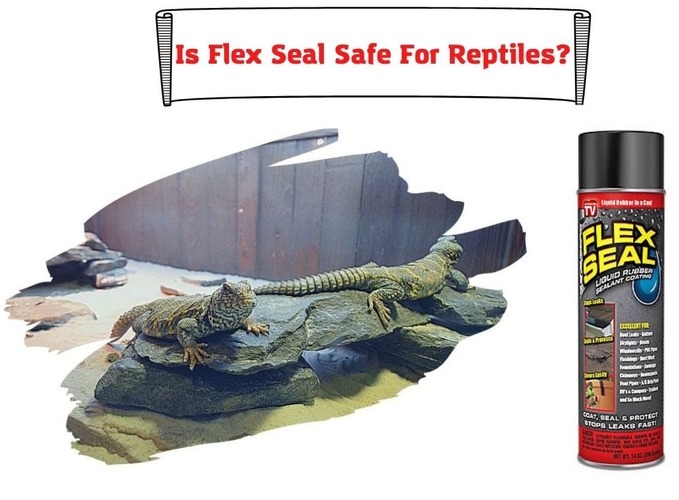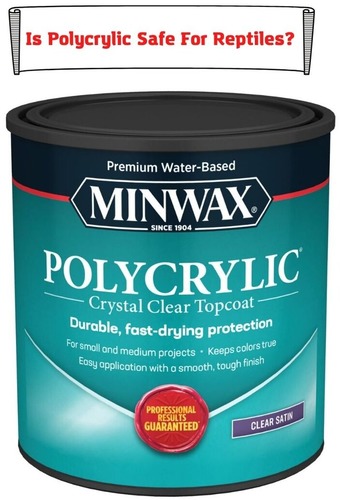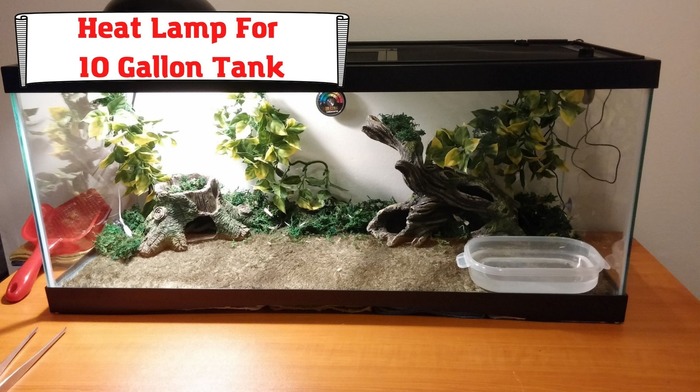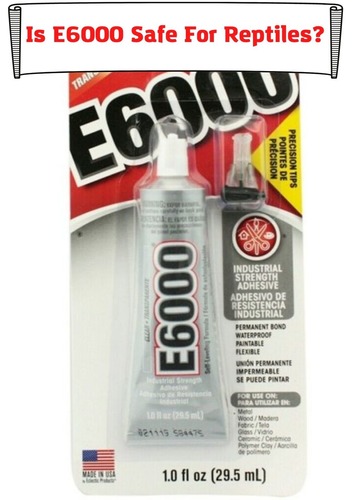A lot of people ask us about some products they want to use in their enclosures with reptiles. And in most of the cases we just say – No, you can’t use this because it’s dangerous for your reptile. We never go deep into details because it would take us a lot of time. But when we are talking about Plasti Dip, it’s not that easy to say something with one sentence.
So, we’ve decided to write an article about whether you can use Plasti Dip for reptile enclosures or not. If you are creating or repairing your vivarium, you should know more about the materials. Once you understand their contents and potential threats to your animal, you will not ask all these questions that come to our e-mail daily.
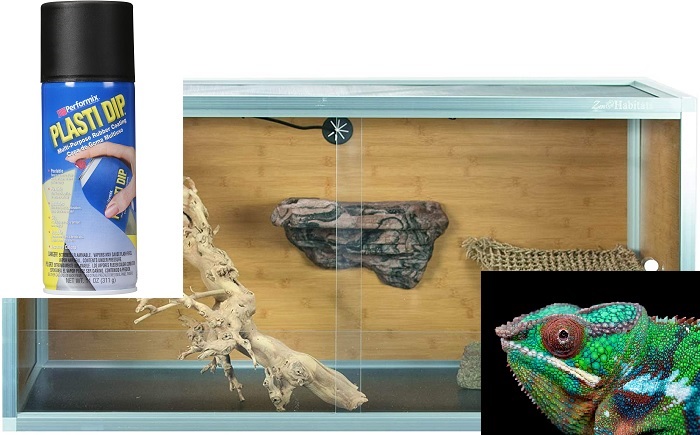
So, today, we’ll be speaking about the following:
- What’s Plasti Dip and why do reptile owners want to use it?
- Is Plasti Dip dangerous or safe for your animal?
- What can be the consequences of using Plasti Dip in a vivarium?
- What alternatives of Plast Dip can you get?
Let’s get started!
What’s actually Plasti Dip?
Well, you are not the first person who wanted to use Plasti Dip in the enclosure with reptiles. But why do people come up with this idea? Plasti Dip is actually made for metal parts. For example, it’s often used as a temporary coating for car body parts. Or it can be used for any other metal parts to cover them and protect from rust for a long time.
Plasti Dip is actually a rubber coating. It forms a kind of a rubber film that doesn’t allow water and air to contact a certain surface. On the official website, the seller of Plasti Dip says that this is a “multi-purpose rubber coating”.
And here are some factors they say you’ll get:
- over 50 available colors you may use for your reptile tank or enclosure;
- protection against different acids and moisture as well as other factors;
- the rubber coating remains stretchy, it doesn’t fully cure (and here’s the problem);
- it can be used under a wide range of temperatures – up to 200 degrees F;
- you can easily remove (they call it to peel) Plasti Dip from most surfaces.
These are just some of the important things you may get with Plasti Dip. And that’s why a lot of people who own reptiles start thinking about using this material to seal their enclosures. An especially popular question is if they can use Plasti Dip on wood and use it to seal the wooden enclosures.
The answer is not that simple – yes and no. We are skeptical about all products that are not made for reptiles. And we have to dig into details first and get all the components that are included in Plasti Dip. Also, we would be careful with one of the factors – the material can be “easily peeled” off nearly all kinds of surfaces. And now we’ll explain our concerns.
One problem you should know about
Reptiles are the guys whose behavior you can’t predict. They can reside in an enclosure calmly for a year and then they may start eating the sealant. By the way, this is one of the most popular reasons for death for pet reptiles. They can peel off that sealant and start eating it. And that’s why you should always rely on reptile-safe materials only.
We wouldn’t say that Plasti Dip is easy to peel off wood, though. Especially, if it was applied correctly. By “applied correctly” we mean that it should be hidden from your animal. It shouldn’t have any spots that could be chewed by a reptile.
If your reptile still finds some piece of Plasti Dip and starts chewing it, a choking hazard appears. So, if you decide to use this product, make sure you hide it away from your reptile and the animal doesn’t have any access to the sealant.
Chemical damage – is Plasti Dip safe?
The content of Plasti Dip is quite optimal. It can be used in any place and it will not harm any living creatures. The most important thing is that Plasti Dip doesn’t contain heavy metals and other toxic elements. It will not harm your animal if the reptile just stays in an enclosure that was sealed with Plasti Dip.
But chances are that a reptile will chew and swallow this sealant. In this case, you will have two options: it may not harm the animal or it may cause choking. Plasti Dip won’t cause bad poisoning because it doesn’t contain any severely harmful elements once cured. But it may be hard to swallow because it’s sticky. So, your animal may just choke.
Using Plasti Dip for enclosure sealing – what’s important?
Enclosures are very often made of wood. You will have to seal these enclosures correctly because they will not serve you for a long time, otherwise. When sealing an enclosure, you may use something like Plasti Dip, but it’s very important to use it correctly. Once you make some mistakes, the efficiency of your sealant will be close to zero.
Before you do anything with your new enclosure, you should read more about the sealant you’ve chosen. If it’s Plasti Dip, go to their website or to some specialized forums and get more information on how to use it.
Here are some tips:
- Clean your wood before you apply any sealant. If you don’t clean the wood, some dust will not allow the sealant to penetrate and create good protection.
- Use primers. Plasti Dip sells a special primer that should be used in some cases with their products. Use this special primer to let the material create an efficient film.
- Make sure it’s impossible to peel the material off the wood. It’s extremely important because your animal will certainly try to do it.
- Don’t choose bright colors. Plasti Dip comes in different colors and it allows you to mix your own color. Better choose something like wood, not a bright color that would attract your pet.
- Let it cure. You should wait for at least one day before you keep working with our enclosure. We recommend waiting for more than 7 days before you put your reptile in the enclosure after sealing it with Plasti Dip.
- Cover it with something. Don’t let your curious animal find it and chew it. If it likes the taste, you will have a big problem.
Plasti Dip is really good to use because it’s easy to apply. You will not have to prepare the surface much – just clean it and use a special primer. Also, you will not have to wait for a long time. We still recommend waiting longer because it may affect the health of your reptile.
Keep an eye on leveling all Plasti Dip sealed elements in your enclosure. If you leave a certain part that can be chewed, it will be chewed sooner or later. You will not want to risk the life of your reptile just for getting some easy-to-use sealant, right?
Maybe, some alternatives?
Sealing your reptile enclosure is a big problem. Nearly all sealants have some anti-mold, anti-bacterial elements in them. It means they are poisonous to your reptile. You should remember that a reptile is extremely tender and it can die just after some contact with poisonous materials in its enclosure.
Among the alternatives of Plasti Dip, we can name pure silicon. Please pay attention to the contents and to the purpose of the silicone you buy. It should be 100% silicone, and it shouldn’t be used for anti-mold purposes or something like that. The fewer additions you have in the silicone, the better it suits your needs.
We highly recommend using special sealers that are made for aquariums and reptile enclosures. These sealants are meant to have direct contact with animals and not hurt them at all. Nearly all of them are based on silicone, but some have a different base. You will have the possibility to find a lot of them in pet shops and also in special online shops with goods for reptiles. This is the best choice, and it’s even much better than Plasti Dip.
Final words
We are not positive about using any kinds of materials in your reptile enclosure that are not made especially for this purpose. But Plasti Dip can still be used in any place where it will contact with animals. Your only task is to check that the animal shouldn’t have direct contact with Plasti Dip. Otherwise, your pet may choke when it tries to chew this thing.
Also, proper application is important. We believe that you should use a special primer to prepare the surface. We also think that you should cover your sealed spots with something to not let your animal have direct access to them. These are simple precautions that will make your pet’s life safer. But if you have access to special reptile enclosure sealers, better buy them.
- Pacman Frog Looks Deflated – What’s Wrong and What to Do? - August 7, 2023
- How to Put Snake Back in Cage after Feeding? Important Concerns - July 31, 2023
- Repta Boost: Instruction, Considerations, Ways to Use - July 24, 2023
